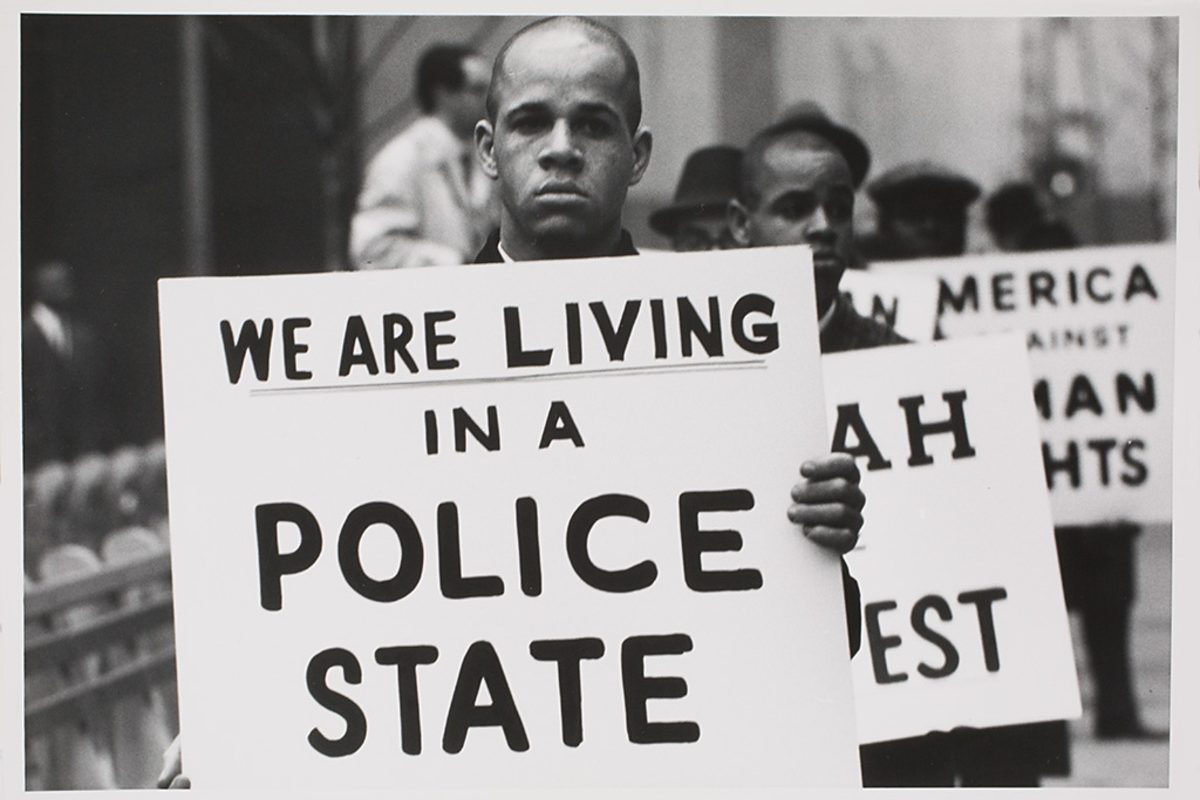

Gordon Parks' subject was America. Few if any photographers wrestled as long, as hard, and as successfully with the meaning of America as he. His greatest achievements as a photographer were a series of Life magazine photo-essays in which he challenged the nation to create a society in which all people were truly equal and enjoyed the inalienable rights of "life, liberty, and the pursuit of happiness." Between 1948 and 1970, tens of millions of Americans encountered his photographs, and the texts that he sometimes wrote to accompany them, in the pages of Life. His words and images educated, inspired, and sometimes enraged his readers as he introduced many of them to hard realities of poverty and racism. In the process he became one of the twentieth century's foremost interpreters of African-American life and culture.
Several of Parks' most significant Life photo-essays form the core of the Gordon Parks photography collection at the Ulrich. The photographs that he made about subjects such as a teenaged gang leader, his own hometown of Fort Scott, Kansas, segregation in the deep South, and poverty in the urban North allowed Life's readers to explore for themselves the relationship between African Americans and the American dream of equality and opportunity.
A full biography, chronology, and archive of the life and work of Gordon Parks is available at the Gordon Parks Foundation.
Download Slide Show Image List
In 1956, Parks spent several weeks in the deep South, photographing the Thorntons and the Causeys, members of an extended African American family. He documented their efforts to preserve their dignity and find a measure of prosperity in the rigidly segregated society. It was probably the most psychologically demanding assignment that Parks ever completed. Years later he wrote that the "experience had been even more horrifying than I realized; it was like awakening from a nightmare."
"The Restraints: Open and Hidden" appeared in Life magazine's 24 September 1956 issue. All of the photographs were in color. When Parks later had the images printed for exhibitions and books, he told his printers to convert them to black and white. He believed that color softened "the harshness that is needed to show poverty-stricken areas."
Download Slide Show Image List
"The White Devil's Day is Almost Over," Parks' 1963 article about the Nation of Islam [NOI, popularly known as the Black Muslims] was one of the most explosive photo-essays that Life ever published. There was nothing sensational about Parks' photographs or the personal essay that he wrote to accompany them. That was the problem. At a time when the press demonized NOI leaders as apostles of hatred, Parks offered a nuanced view of the religion and its adherents, underscoring their humanity.
Parks spent three months working on the photo-essay. He came to see that for all of the fierce rhetoric that surrounded the NOI, it focused most of its attention inward, on the black community. Its doctrine was to withdraw from white society and, at the same time, to heal what it believed were the broken souls of black people. Parks' photographs showed a disciplined community that placed great stress on the importance of the family. He and Malcolm X, who was his guide, struck up an enduring friendship, despite their profound disagreements about politics and theology.
Life published the photo-essay in its 31 May 1963 issue.
The didactic information on Gordon Parks is excerpted from the 2016 Ulrich Museum of Art exhibition Visual Justice: The Gordon Parks Photography Collection at WSU, curated by John Edwin Mason.
Watch John Edwin Mason | Visual Justice: Gordon Parks’ American Photograph